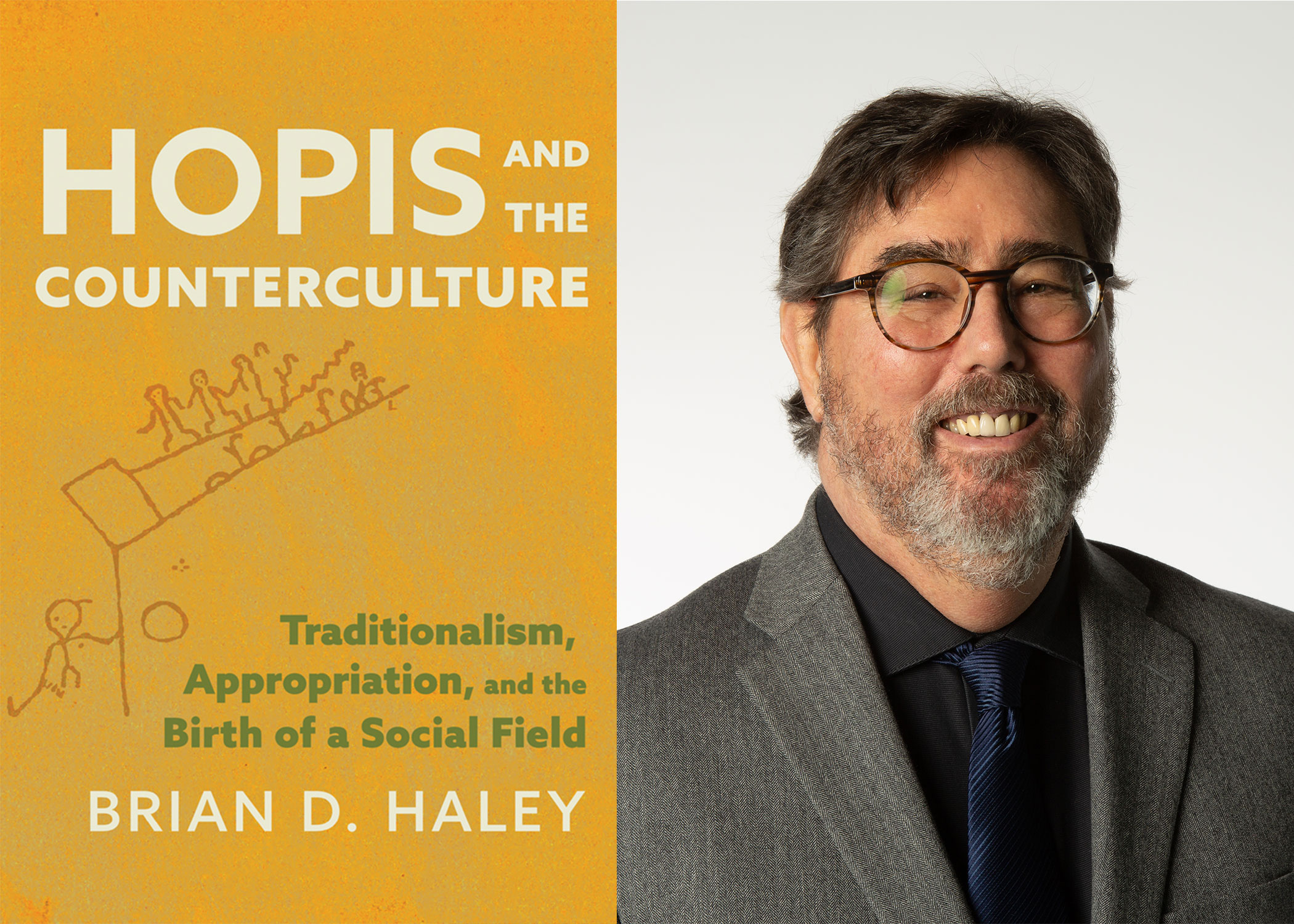November 5, 2024
In the new work Hopis and the Counterculture, Brian Haley addresses how the Hopi became icons of the followers of alternative spiritualities and reveals one of the major pathways for the appropriation of Indigenous identities that exploded in the 1960s. Today, the author answers our questions.
What got you interested in this topic?
The truth is that I stumbled upon it largely by accident. I was searching for what influenced many of California’s Spanish colonial descendants to adopt identities as “traditional” Native Americans after the late 1960s. This led me to discover a social field that not only cast Hopis as spiritual high priests of global significance, but also helped create a major strand of neo-indigenism and the Native American “traditionalism” of that era. I realized that I had connected the dots between these. I knew enough Hopi ethnography and counterculture history to realize that I’d stumbled upon answers to questions of great concern to Hopi people and to those interested in the development of traditionalism, neo-Indianism, and new spiritualities.
The book addresses how the Hopi became icons of the followers of alternative spiritualities and reveals one of the major pathways for the explosive appropriation of Indigenous identities in the 1960s. It delves into the roles played by non-Hopi actors and the timing behind the widespread popularization of Hopi religious practices. As an anthropologist, why is documenting this important?
The level of misunderstanding regarding the Hopi people is substantial. We need to understand why that occurs so we can strive to do better and be better neighbors. It is significant that this widespread misunderstanding ties in with other significant ongoing issues we are struggling to understand, especially how we react to the constant disruptions wrought by global forces beyond local control. For instance, documenting neo-indigenism is vitally important because Native communities are under substantial threat from this phenomenon and our institutions still haven’t acknowledged it. Building an understanding of how and when people seek relief from their sense of powerlessness in identity, traditionalism, and primitivism is, I hope, another one of the payoffs here.
In the acknowledgements, you write that Stewart Koyiyumptewa, Director of the Hopi Cultural Preservation office, took an early interest in your research and invited you to share it with staff and elders who advise them. How did that take shape?
Ordinarily, if you wish to study the Hopi people you first talk with the Hopi Cultural Preservation Office. However, I was in the unusual position of having arrived at a Hopi subject through a non-Hopi one. My research lay primarily outside of the Hopi Tribe yet there were Hopis in my study. When I realized where my research was heading, I knew that the Hopi Cultural Preservation Office would be interested because they had long voiced concerns about the appropriation and misrepresentation I was uncovering. My friend, Wolf Gumerman put me in touch with Stewart. I periodically sent things to Stewart and asked questions. Eventually, he invited me to come share my research with his staff and the council of elders who advise his office. When I arrived, one of the staff thanked me for my work on this. I was very moved, and I hope they also find the book helpful.
You conducted research at archives and special collections across the country, including our own Special Collections, here at the University of Arizona Libraries in Tucson. What surprised you about your work in archives?
There were so many surprises that I originally wanted to call the book, “Unexpected Histories.” I was endlessly surprised by how much documentation was available about a story that had been so overlooked. Perhaps I shouldn’t have been since my subjects were all writers! We are biased to think that if you are interested in things Hopi, that is where you look. But a truism of identity research is that how outsiders perceive your group can have huge impacts, something I had explored previously with immigrants and neo-Indians. So, I looked on the outside where others hadn’t, in the works of a Christian pacifist anarchist, two spiritual seekers, and the Firesign Theatre. The voices preserved in the archives led me to one surprising discovery after another, gradually revealing the shape and character of an expansive and influential social field that others had missed.
What do you hope readers and researchers take away from this work?
I hope that readers grasp how easy it is for our desires to color our understanding of the world around us, and how beliefs we think are respectful and protective of others may be anything but.
About the Author
Brian D. Haley is a professor of anthropology at the State University of New York at Oneonta and a leading scholar of the appropriation of Indigenous identities by people with non-Native histories. He is the author of Reimagining the Immigrant: The Accommodation of Mexican Immigrants in Rural America and the co-editor of Imagining Globalization: Language, Identities, and Boundaries.
 The University of Arizona Press
The University of Arizona Press


